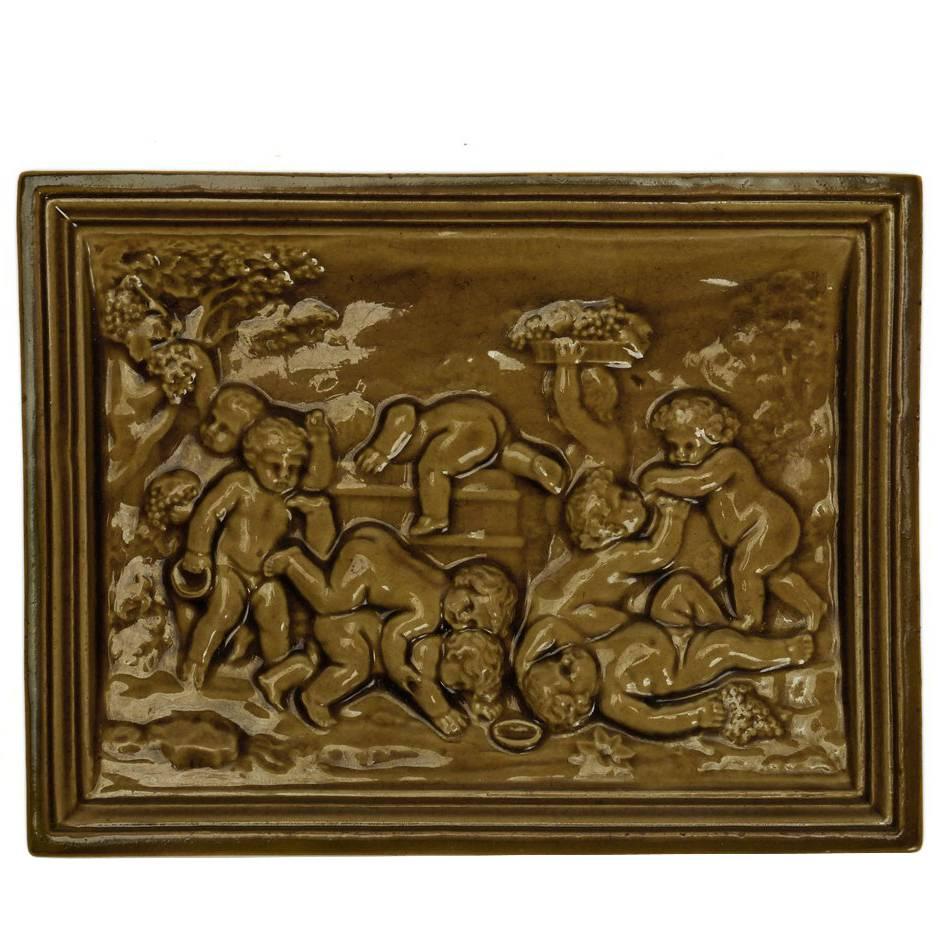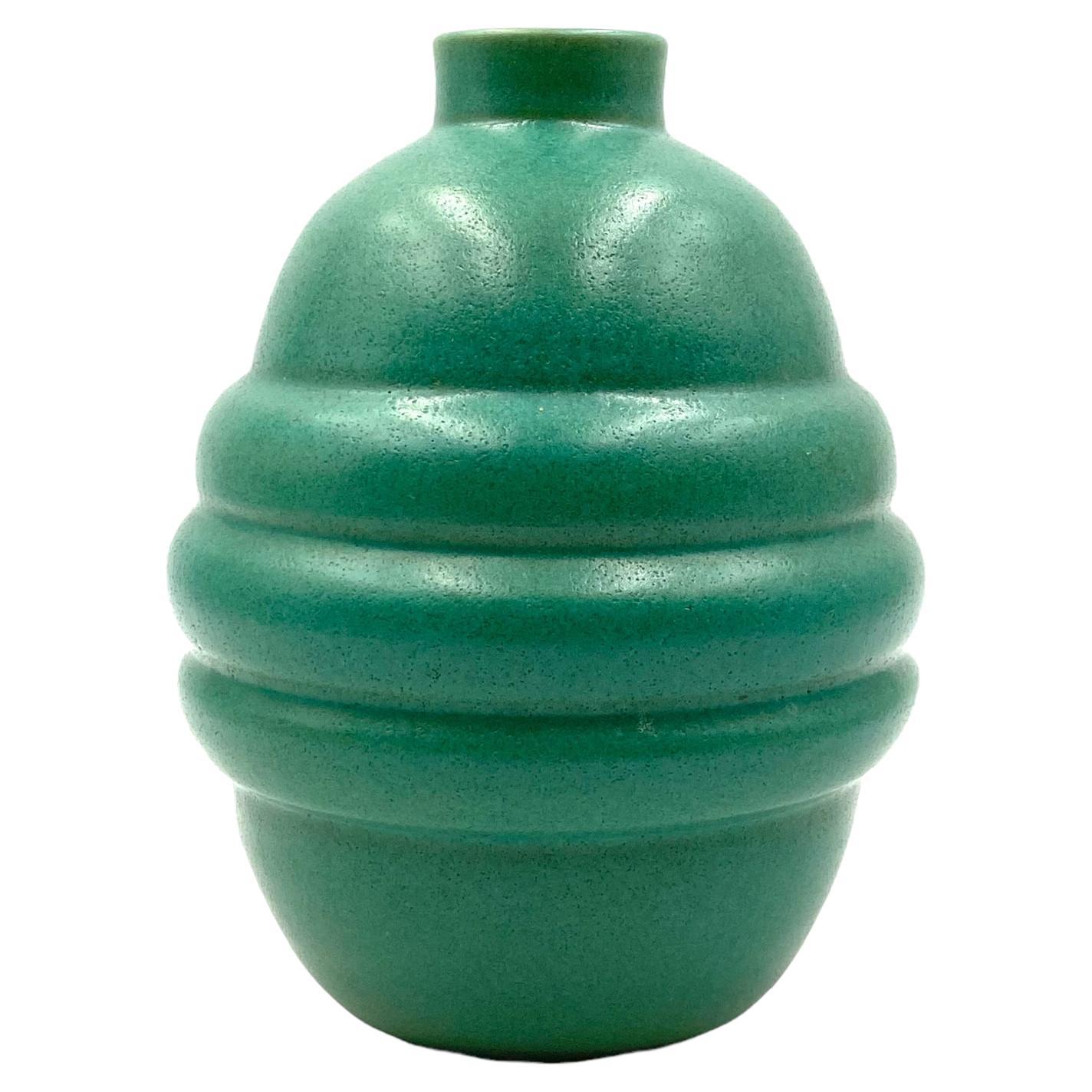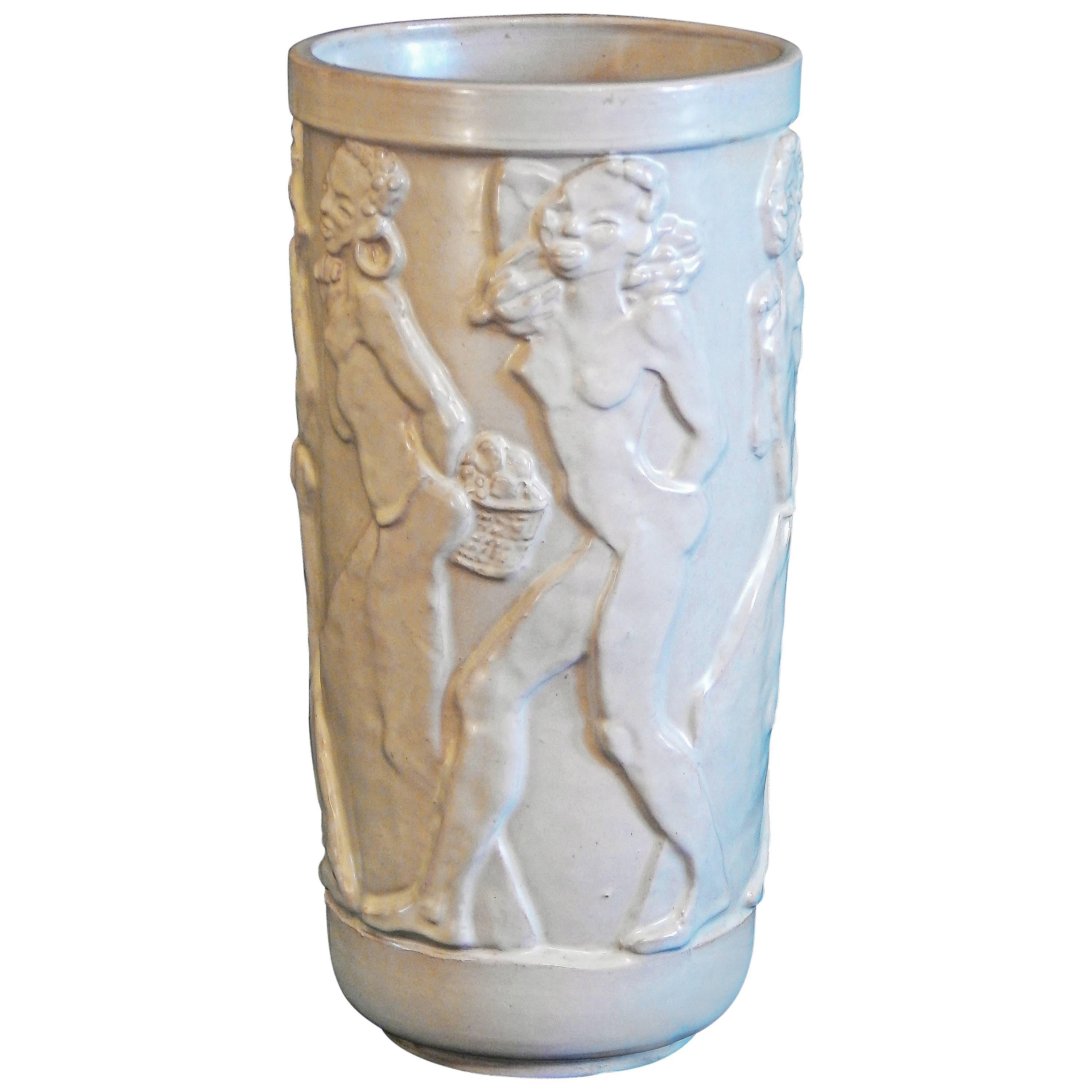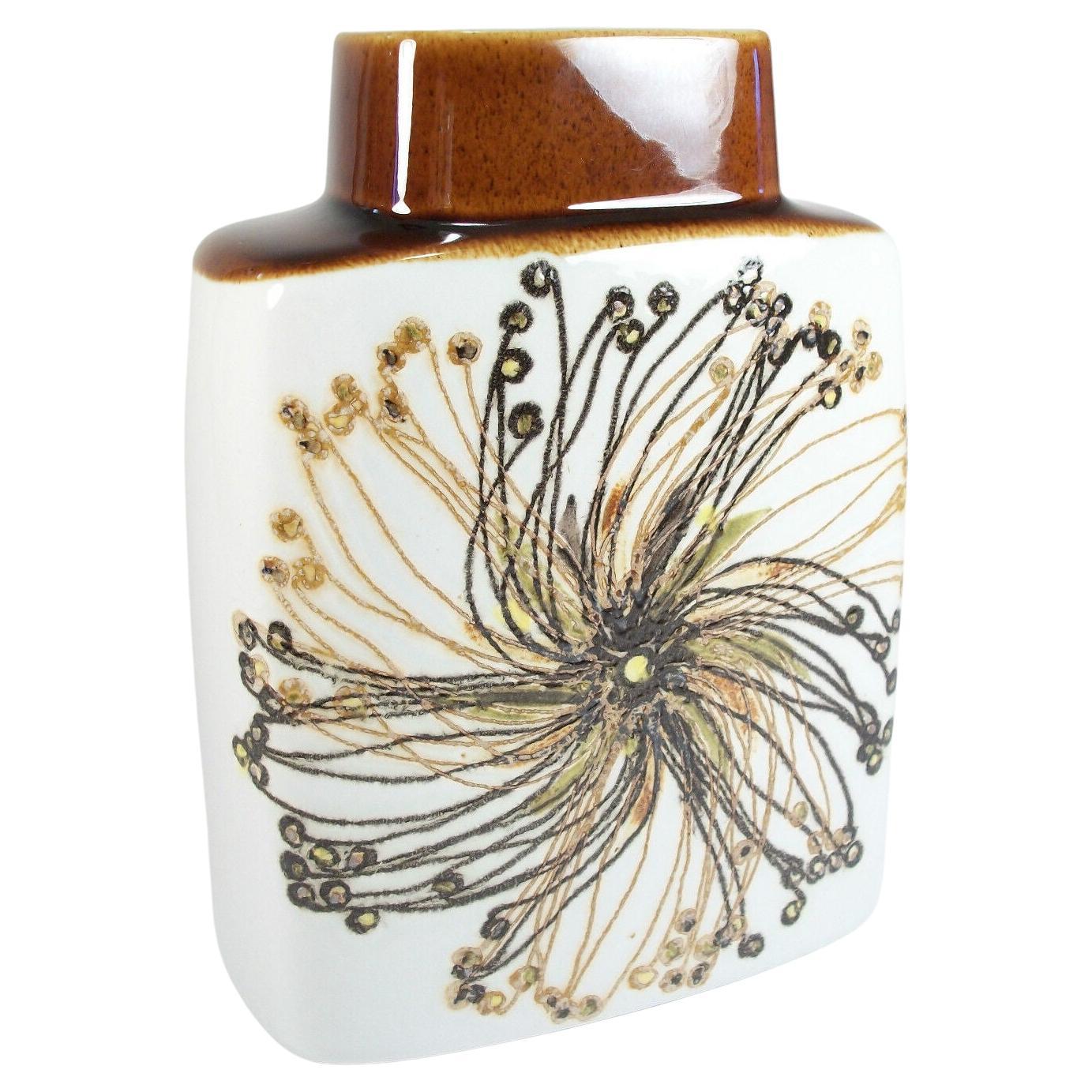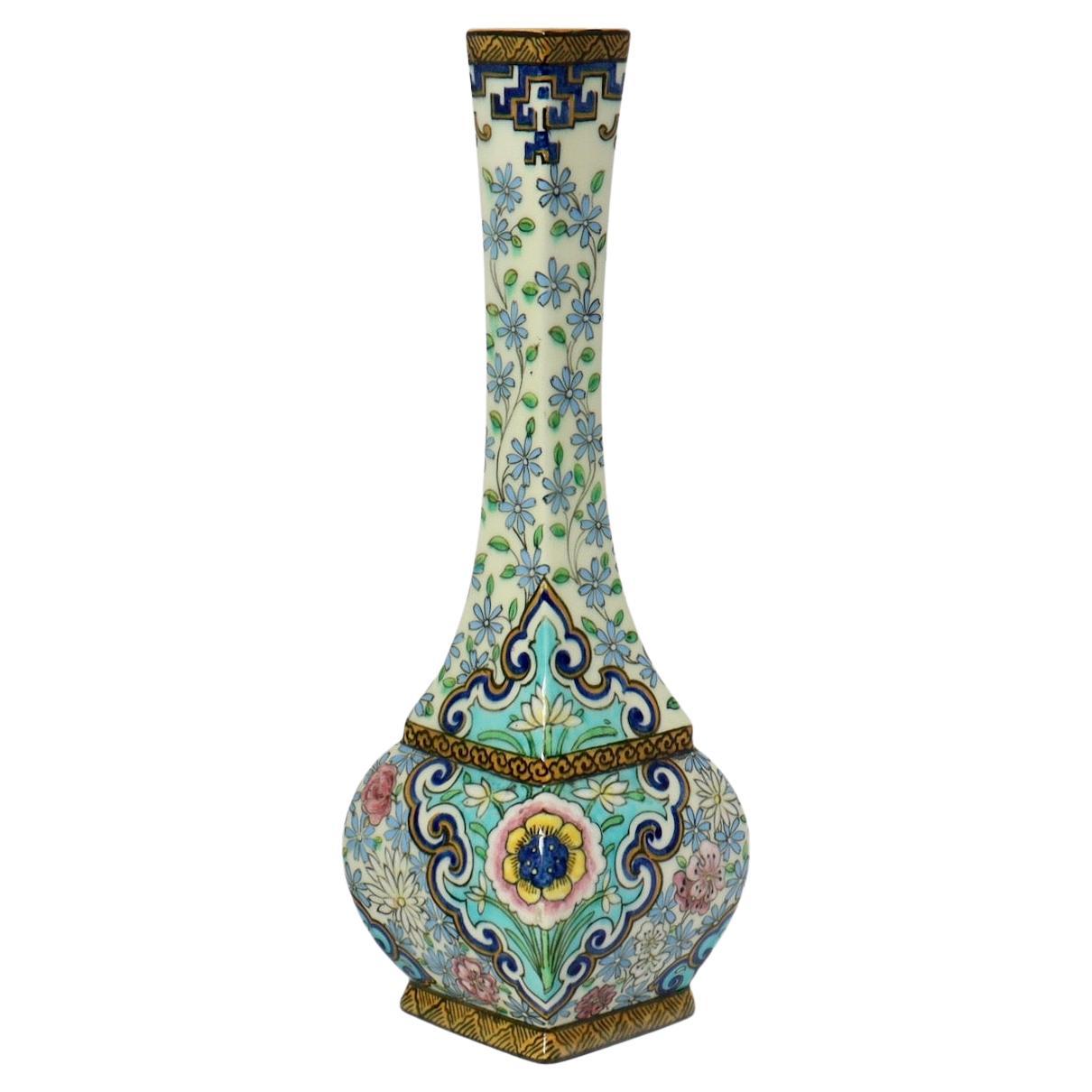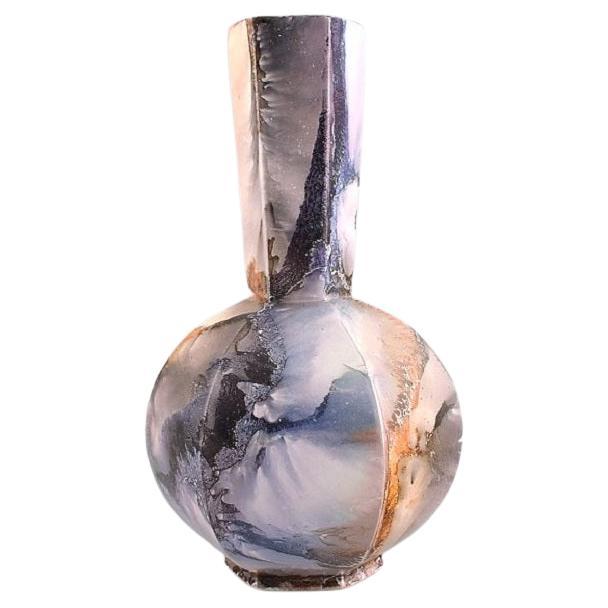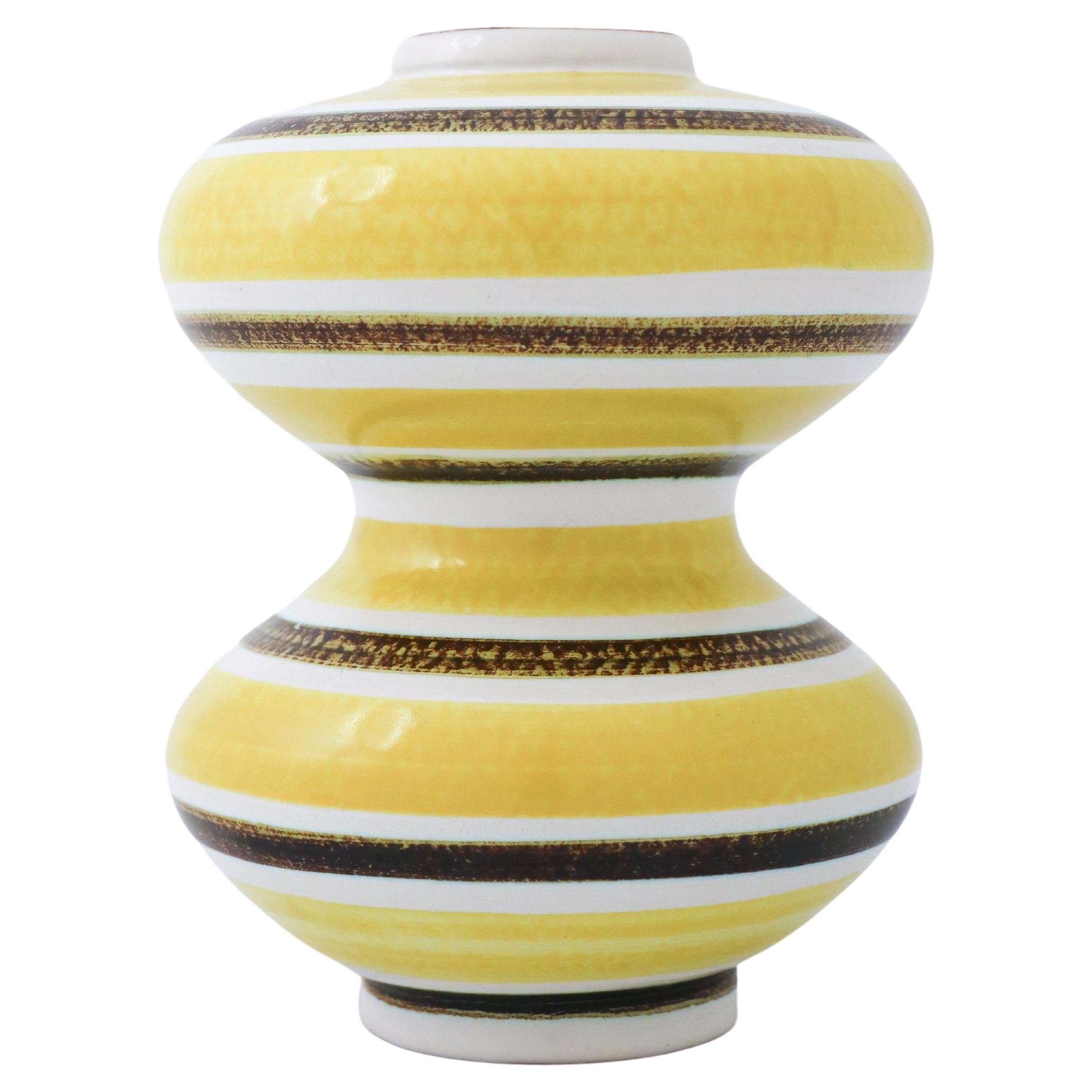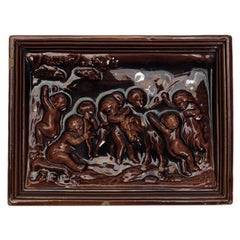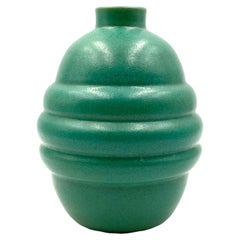
Burmantofts Faience Floral Frieze Vase
View Similar Items
Want more images or videos?
Request additional images or videos from the seller
1 of 9
Burmantofts Faience Floral Frieze Vase
About the Item
- Creator:Burmantofts Pottery (Maker)
- Dimensions:Height: 9.06 in (23 cm)Diameter: 5.52 in (14 cm)
- Style:Arts and Crafts (Of the Period)
- Materials and Techniques:
- Place of Origin:
- Period:
- Date of Manufacture:circa 1895
- Condition:Wear consistent with age and use.
- Seller Location:Bishop's Stortford, GB
- Reference Number:Seller: DACL1803011stDibs: LU1328233408202
About the Seller
5.0
Platinum Seller
These expertly vetted sellers are 1stDibs' most experienced sellers and are rated highest by our customers.
Established in 2009
1stDibs seller since 2015
1,170 sales on 1stDibs
Typical response time: 3 hours
Associations
LAPADA - The Association of Arts & Antiques DealersInternational Confederation of Art and Antique Dealers' Associations
More From This SellerView All
- Pair of Large Stunning Burmantofts Faience Floral VasesBy Burmantofts PotteryLocated in Bishop's Stortford, HertfordshireA stunning pair of Burmantofts Faience vases of slender baluster form, cast in low relief with flowers and foliage, in shades of blue, turquoise, green, yellow and red on a cream gro...Category
Antique 1880s English Vases
MaterialsPottery
- Burmantofts Faience Bacchanalian Green Glazed TileBy Burmantofts PotteryLocated in Bishop's Stortford, HertfordshireA scarce Burmantofts Faience Bacchanalian tile of rectangular form modelled in relief with figures attending to a resting man set within a raised stepped edge and decorated in green ...Category
Antique 1880s English Decorative Art
MaterialsCeramic, Faience
- Burmantofts Faience Bacchanalian Red Glazed TileBy Burmantofts PotteryLocated in Bishop's Stortford, HertfordshireA scarce Burmantofts Faience Bacchanalian tile of rectangular form modelled in relief with figures with a goat set within a raised stepped edge and decorated in burgundy glazes. Inci...Category
Antique 1880s English Decorative Art
MaterialsCeramic, Faience
- Scarce Burmantofts Faience Bacchanalian Green Glazed TileBy Burmantofts PotteryLocated in Bishop's Stortford, HertfordshireA scarce Burmantofts Faience Bacchanalian tile of rectangular form modelled in relief with figures gathering grapes, some at play, set within a raised stepped edge and decorated in m...Category
Antique 1880s English Decorative Art
MaterialsPottery
- Antique Italian Le Nove Floral Painted Faience Earthenware Lidded Jar, 19th CLocated in Bishop's Stortford, HertfordshireA fine and elegant antique Italian Le Nove floral painted faience vase and cover. The earthenware hexagonal shaped vase has a moulded ribbed body exquisitely h...Category
Antique Late 19th Century Italian Vases
MaterialsFaience
- Burmantofts Faience Mantle Clock with Winged HorseBy Burmantofts PotteryLocated in Bishop's Stortford, HertfordshireA very rare Burmantofts Faience Arts & Crafts mantel clock of flaring rectangular column shape, cast in relief with fruiting swags and winged putti masks, the top surmounted with a g...Category
Antique 1890s English Arts and Crafts Table Clocks and Desk Clocks
MaterialsFaience
You May Also Like
- Burmantofts Faience "Aesthetic Movement" Plaque 19th c.By Burmantofts PotteryLocated in Great Barrington, MAThis extremely large Faience pottery plaque is the epitome of the "Aesthetic Movement" style at it's best! Thick impasto enamels create a 3-dimensional effect of flowers rising out o...Category
Antique 19th Century English Decorative Art
- Art Déco Turquoise Faience Vase, France, 1940sLocated in Firenze, ITArt Deco turquoise globular vase. Faience France 1940s Measures : 24 cm Height - diameter. 18 cm Conditions: excellent.Category
Vintage 1940s French Art Deco Vases
MaterialsCeramic
- "Nude African Frieze, " Exceptional Art Deco Sculptural Vase by Ebeling, SwedenBy Allan EbelingLocated in Philadelphia, PAAn exceptional, carved bas relief vase by Allan Ebeling for Steninge Keramik in Sweden, this piece depicts a frieze-like procession of six, nude African women carrying everything fro...Category
Vintage 1930s Swedish Art Deco Vases
MaterialsClay
- Royal Copenhagen, Malmer & Thorsson, Faience Vase, Denmark, circa 1960'sBy Ellen Malmer, Royal CopenhagenLocated in Chatham, ONROYAL COPENHAGEN - Ellen Malmer/designer - Nils Thorsson/shape designer - Mid Century Modern - Baca series - Aluminia faience vase number 635/3121 - signed on the base ROYAL COPENHAG...Category
Mid-20th Century Danish Scandinavian Modern Vases
MaterialsPorcelain
- A Théodore Deck (1823-1891) Enamelled Faience Soliflore Vase circa 1875By Theodore DeckLocated in Saint-Ouen, FRThéodore DECK (1823-1891) A polychromatic enamelled earthenware soliflore and quadrangular shape vase with Sino-Japanese inspiration design of flowers and geometrical friezes all around. Impressed uppercase mark "TH.DECK" under the base. Circa 1875 Born in Guebwiller in Alsace, Théodore Deck trained as a ceramist in his home region, then in Germany. He went into partnership with his brother, Xavier Deck, to create his own factory in Paris in 1858. At the Exhibition of Industrial Arts in 1864, he presented pieces covered with transparent enamels that were not cracked, and then made his first attempts at reliefs under transparent enamels. He developed a bright turquoise color, famously renowned as "Bleu Deck". It is this nuance that we find on the salamander represented on this vase. In 1887 he published a treatise entitled "La Faïence", in which he explained some of his discoveries. That same year, he became director of the Manufacture de Sèvres. Theodore Deck (1823-1891) is a French ceramist born in Guebwiller in Alsace. He is passionate about chemistry and the physical sciences. In 1841, he joined the master stove maker Hügelin father as an apprentice in Strasbourg. In two years, he learned of the methods inherited from the 16th century, such as the encrustation of colored pastes in the style of Saint-Porchaire. This apprenticeship did not prevent him from spending his free time draw-ing or modeling clay in the studio of sculptor André Friederich. Escaping military service, he made a tour of Germany as is the tradition with fellow Alsatian stove-makers. The quality of his work allows him to obtain important orders in Austria for the castles of the provinces and the imperial palaces, in particular for the palace of Schönbrunn. He continues his journey in Hungary to Pest, to Prague, then, going north through Dresden, Leipzig, Berlin and Hamburg. On the strength of his apprenticeship, he arrived in Paris in 1847. Recommended by Hügelin, he went to the stove factory of the Bavarian potter Vogt, located rue de la Roquette. The Revolution of 1848 interrupts production and Deck decides to return to his hometown. His family then advised him to set up a small terracotta workshop: he made a few busts, statuettes, vases, lamps and copies of famous antiques there. Aware that this situation would not allow him to provide for himself properly, he returned to Paris in 1851 where he was employed by the widow Dumas, daughter of the earthenware maker Vogt for whom he had worked. Hired as a foreman, he supplied the drawings and models to the workers, while working the land himself. The following year, he made the decision to settle not far from his former employer at 20, rue de la Fontaine-au-Roi, probably using his ovens. His brother, Xavier Deck, joins him. It was officially in 1858 that the Deck brothers created their business and settled in Paris at 46, boulevard Saint-Jacques. Initially, the brothers only carry out coatings for stoves. But the business is going so well that barely a year after their installation, they want to diversify their production and engage in ceramics for the cladding of buildings as well as in shaped parts. Deck is interested in politics. In 1870, he opted for French nationality and was elect-ed deputy mayor in the 15th arrondissement of Paris. In 1861, at the Salon des arts et industries de Paris, which was held on the Champs-Élysées, Théodore Deck exhibited his works for the first time: these were pieces with an inlay decoration called “Henri II” and others. pieces covered with turquoise blue enamel or decoration in the style of Iznik ceramics.If he wins a silver medal, reviews are mixed, however. The following year, on the occasion of the Universal Exhibition of 1862 in London, he won over English customers. He surprised by presenting, like the previous year, his Alhambra Vase...Category
Antique 1870s French Japonisme Vases
MaterialsFaience
$4,739 Sale Price30% Off - Arabia, Finland, Art Deco Vase in Glazed Faience, 1920s/30sLocated in Copenhagen, DKArabia, Finland. Art Deco vase in glazed faience. Beautiful marbled glaze. 1920s/30s. Measures: 27.5 x 17 cm. In excellent condition. Stamped.Category
Vintage 1920s Finnish Art Deco Vases
MaterialsFaience
Recently Viewed
View AllMore Ways To Browse
Burmantofts Vases Faience
Hermes Africa Dinner
Honey Badger
Japanese Saki Sets
Jm Monogram Silver
John Myatt
Johnson Brothers Coaching Scenes
Johnson Brothers Harvest Fruit Pattern
Keralouve On Sale
Limouge Plate
Longton Hall On Sale
Lou Rota
Lukas Wegwerth
M Krause Majolica
Massimo Farina
Outeiro Agueda
Paula Von Freymann
Pink Bordallo



